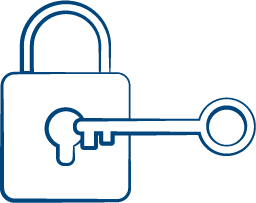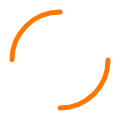General information about catheters for permanent drainage
Are you the general practitioner of a patient with an implanted catheter for the drainage of recurrent pleural effusions or recurrent ascites and would like to learn more about our system and the underlying care concept for the optimal care of the patient? Here we would like to give you some interesting information about permanent drainage, the catheter and the associated procedures.
General information about catheters for permanent drainage
Are you the general practitioner of a patient with an implanted catheter for the drainage of recurrent pleural effusions or recurrent ascites and would like to learn more about our system and the underlying care concept for the optimal care of the patient?
Here we would like to give you some interesting information about permanent drainage, the catheter and the associated procedures.
When is the indwelling catheter for permanent drainage implanted?
Patients with malignant tumors or patients with liver cirrhosis or heart failure may develop recurrent pleural effusions and ascites as accompanying symptoms. Symptoms such as shortness of breath, pain and exhaustion severely restrict the patient’s everyday life.
The implantation of a catheter can help. It is a low-risk, surgical or minimally invasive procedure that has been performed in clinics throughout Germany for many years. Depending on the clinical picture, the patient’s condition and the medical therapy of the underlying disease, the patient’s mobility can be significantly improved through symptom relief and the quality of life can be increased. The patient himself, his relatives or a nursing service can carry out the drainage of the effusions at home (with home drainage products). This means that the patient does not have to go to the doctor for a puncture, and in turn, increased effort and pain for the patient. Instead, he can spend more time with his family and friends.
 Drawing key-lock principle
Drawing key-lock principle
Your patient’s safety comes first: All ewimed products for draining pleural effusions and ascites work according to the key-lock principle. With the help of our unique plug-in connection, faulty connections are avoided.
How do we care for your patient?
Shortly after hospital discharge, one of our specialists visits each new patient at home and gives them, their relatives or caregivers, instruction in the correct use of our drainage systems. This relieves the patient, the resources of the clinic and your practice.
Learn more about the ewimed care concept now.
What do I have to do as a family doctor?
Depending on the drainage interval (doctor’s request), patients must ask you for a follow-up prescription for their drainage material. We ask you to fill this out for your patients – you will find help with this in our sample prescriptions. Your patient will not receive the drainage material in pharmacies or medical supply stores, but exclusively through the company ewimed. He/she must send the prescription filled out by you to us. A postage-paid envelope is available in the patient’s folder (or can be printed out here). Please take note of the remaining material stock, as there may be approx. 5 working days between the posting of the letter and our delivery of the material. The material is delivered directly to the patient by parcel service.
Normally, the stitches on the catheter are also removed in the clinic that performed the implantation. In some cases, however, the general practitioner may take over this task.
We have compiled information on how to pull the stitches on the catheter as well as the most important steps for you and information on draining pleural effusions and ascites.
During the therapy, we are of course available to answer any further questions you and your patients may have.


